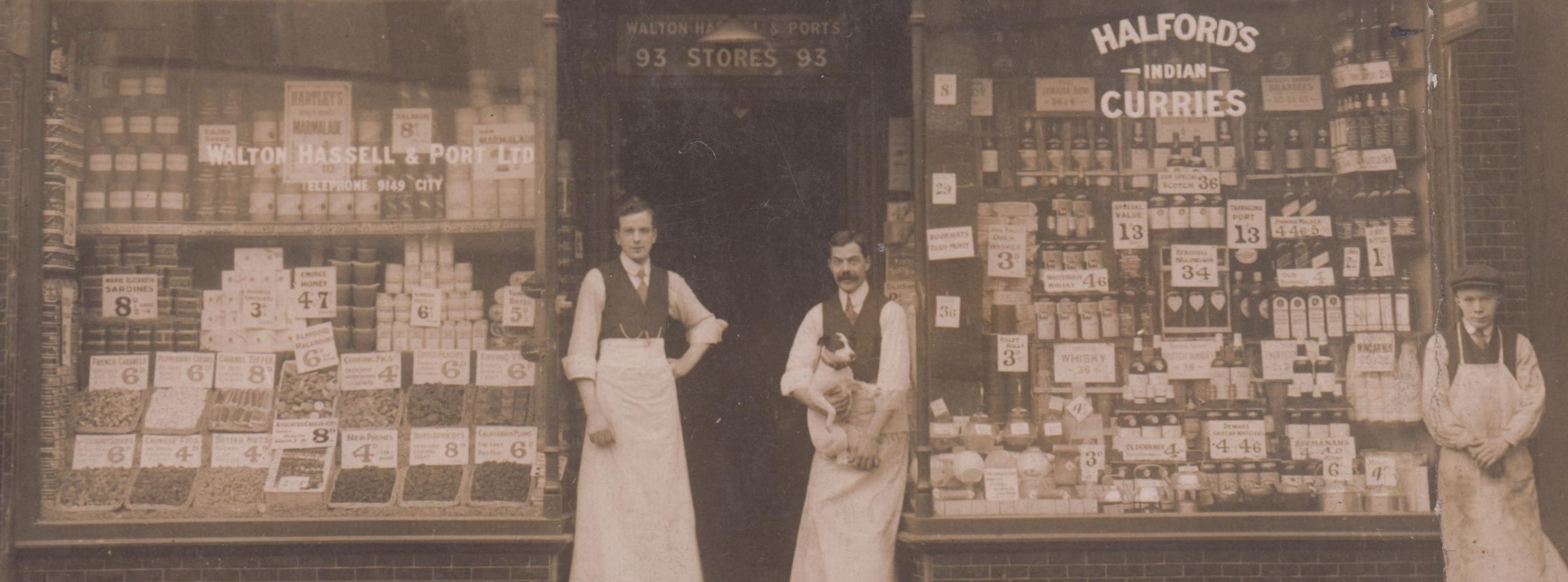What could you buy with a working class wage?

Knowing how much someone was paid only gives us part of the picture. To know whether or not it was a 'sweated' wage, a living wage or a high wage, we need to know how much a worker could buy with their earnings - the contemporary cost of living. This guide provides some general information about how far the Trade Board minimum wage might stretch in the 1910s and 1920s.
Pounds, shillings and pence
Before 1971, money in the United Kingdom was usually calculated in pounds, shillings and pence. There were:
- 4 farthings in a penny
- 2 halfpennies / ha'pennies in a penny
- 12 pence in a shilling
- 20 shillings (or 240 pence) in a pound
- 21 shillings in a guinea
Pounds, shillings and pence were abbreviated to '£sd' or 'Lsd', short for the Latin 'librae' (pounds), 'solidi' (shillings), and 'denarii' (pence); so one pound, 10 shillings and six pence, for example, would be shortened to £1 10s 6d. A sum of shillings and pence could also be shown using punctuation, for example, 10 shillings and six pence could be written as 10/6, 10 shillings (and no pence) could be represented as 10/- .
Regular expenses
The archives of the Modern Records Centre include some real life examples of working class budgets and expenditure during the early 20th century. These can give us an idea of how much basic expenses like food, fuel and rent cost and what proportion of a worker's income they consumed.
- Weekly budget for a family of eight on the wages of a Shropshire agricultural labourer, 1914-5
- Weekly budget for a London railway clerk and his wife, 1914 & 1917
- Weekly budget for a family of nine on the wages of a Warrington worker, 1914 & 1919
- Weekly budget for a family of six on the wages of a Birkenhead dock labourer, 1914 & 1920
- Yearly budget for clothing, etc., for a family of six on the wages of a Birkenhead dock labourer, 1914 & 1920
- Weekly budget for a (theoretical) family of five proposed by employers, 1914 & 1920
- Weekly budget for a family of five on the wages of a shop assistant, 1920
- Weekly budget for a family of three on the wages of an insurance agent, 1920
- Weekly budget for a family of five on the wages of a Limehouse ropemaker, 1921
- Weekly budget for a family of seven on the wages of a Millwall ropemaker, 1921
- Weekly budget for a family of three on the wages of a Bow ropemaker, 1921
- Weekly budget for a woman metalworker in lodgings in Birmingham, 1921
- Weekly budget for a family of six on the wages of an Essex agricultural labourer, 1922
- Winter and summer clothing budget for a City of London 'woman clerk', 1922
- Weekly budget for a family of six on the wages of a Leicester postman, 1926
- Weekly budget for a family of five on the wages of a London postal sorter, 1926
Consumer goods
Trade union journals can include advertisements for clothing, foodstuffs, furniture and other consumer goods. Find out more about the cost of products targeted at working class audiences through these sample adverts:
- Boots and shoes
- Clothing
- Food and drink
- Furniture
- Household goods and special items
- Toiletries and patent medicines
Inflation
The cost of living increased substantially during the First World War and continued to fluctuate during the 1920s. These sources provide information about the changing cost of household expenditure during the 1910s and early 1920s.
- Government figures: cost of food & coal, 1905, 1912 & 1920
- First World War memorandum on increased cost of living, 1914-1917
- Average prices of clothing ordinarily purchased by the working classes, 1914 & 1918
- Bolsover Co-operative Society Ltd.: cost of average grocery order in 1914, 1916, 1918 & 1920
- Birkenhead: cost of food & other household items, 1914 & 1920
- Liverpool: cost of food & other household items, 1914 & 1920
The minimum wage
Summarised information about Trade Board minimum rates of pay is available for these trades:
